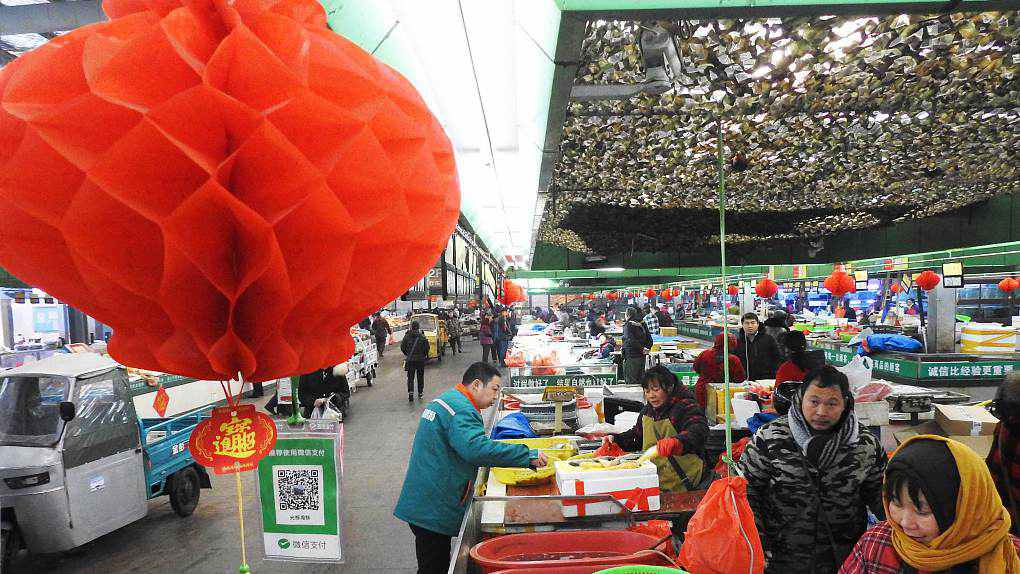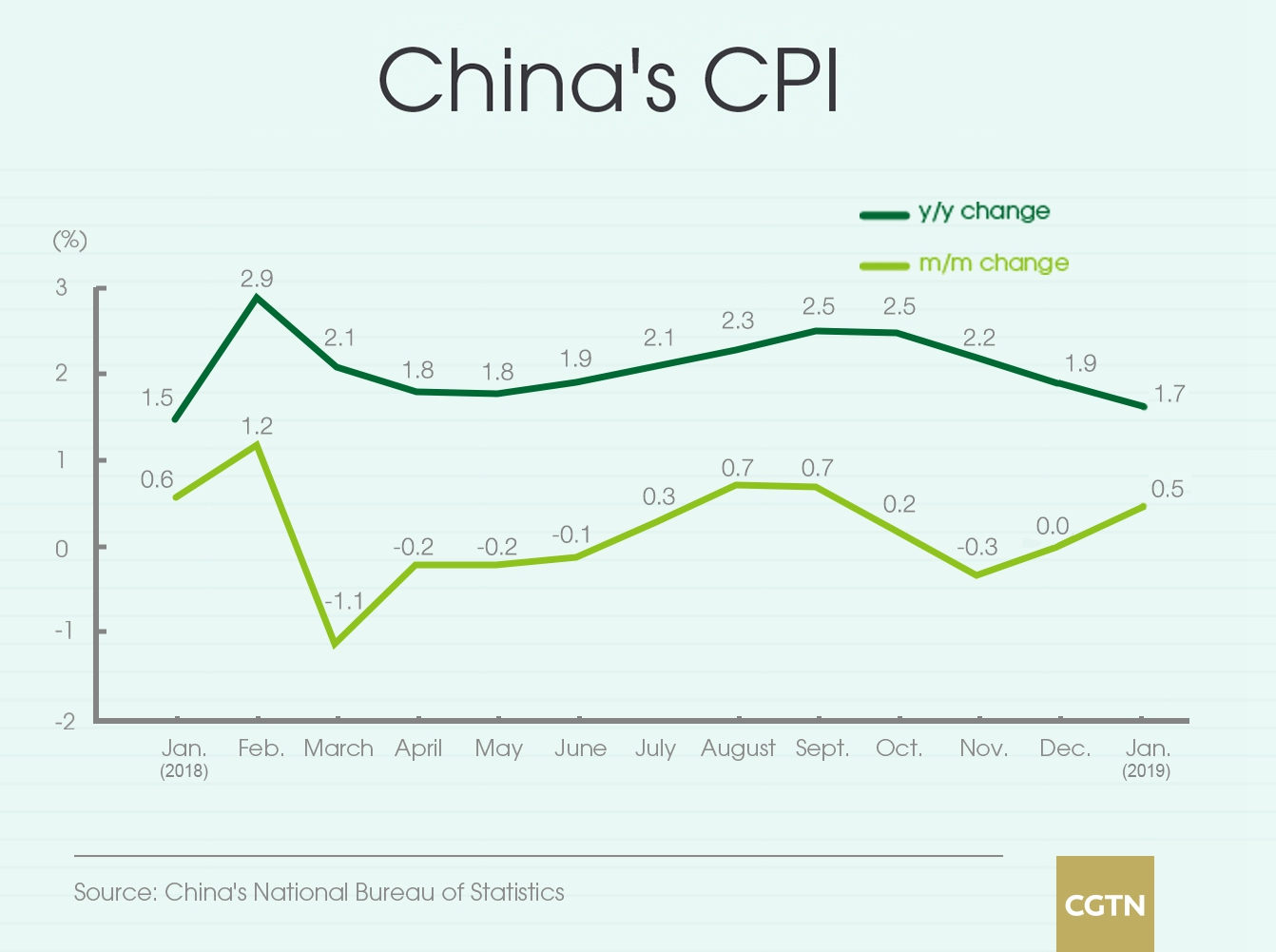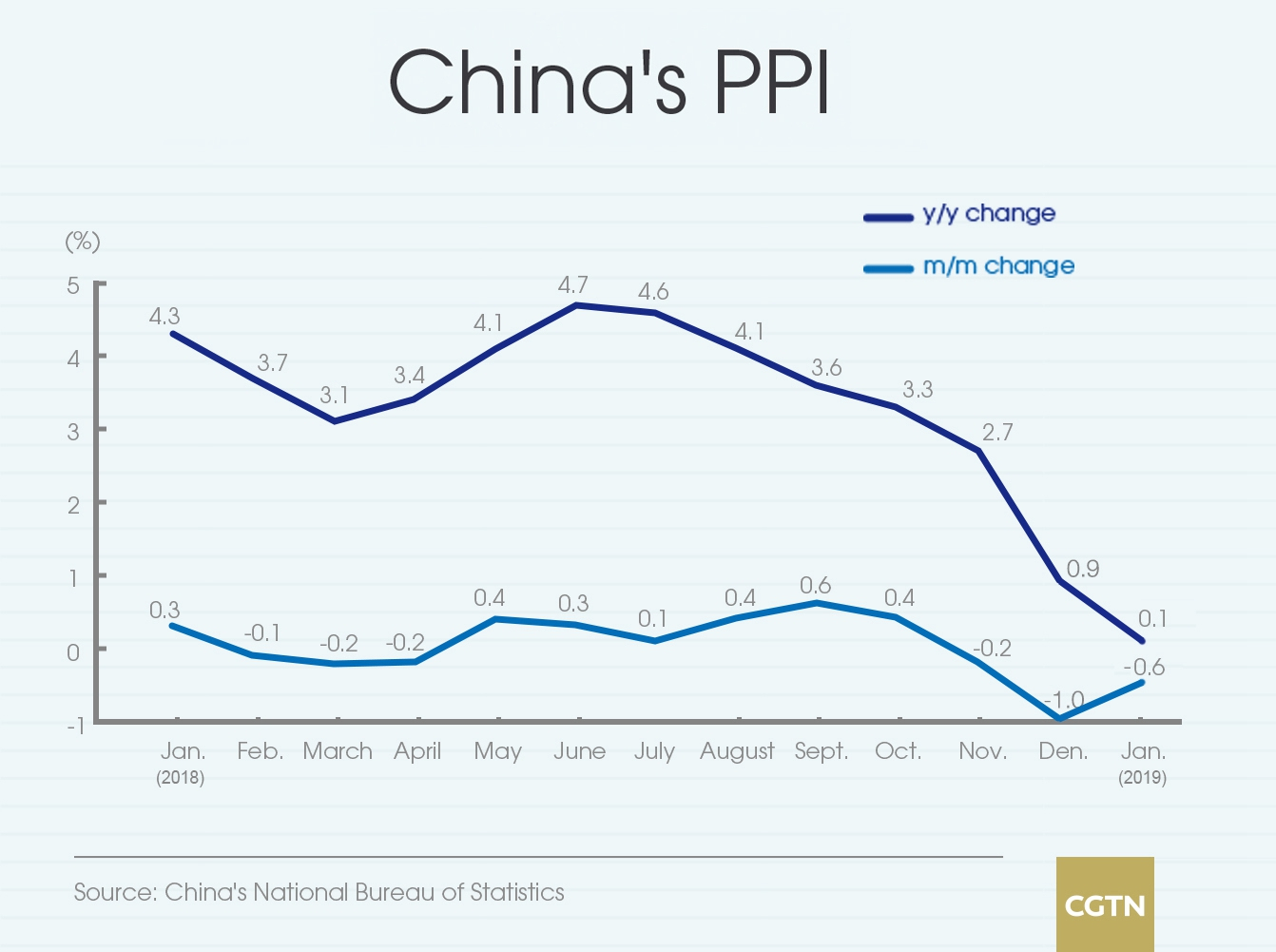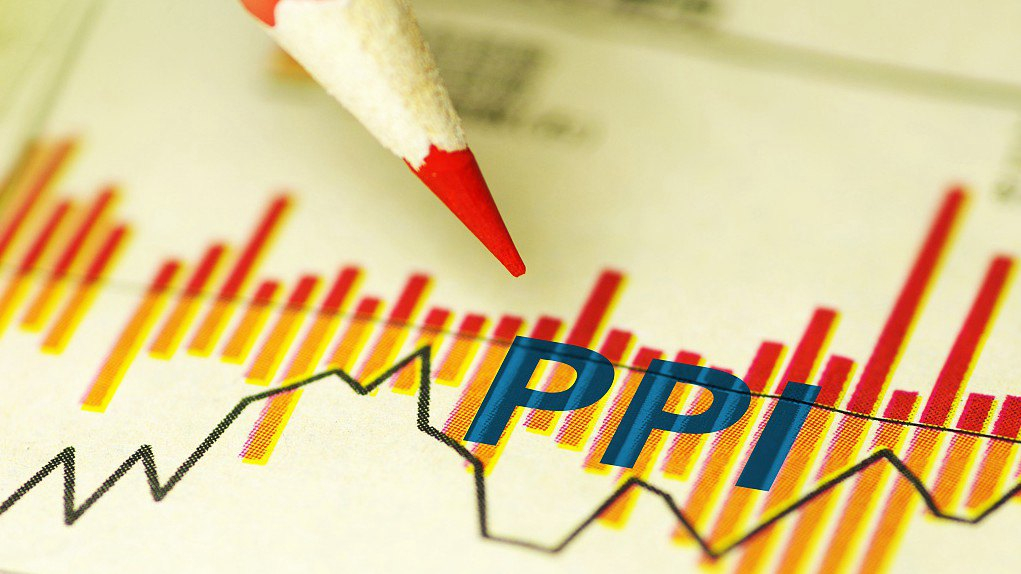
Economy
10:17, 15-Feb-2019
China's CPI up 1.7%, PPI up 0.1% in January
Updated
21:23, 15-Feb-2019
CGTN
02:57

China's consumer price index (CPI) rose 1.7 percent year-on-year in January and the producer price index (PPI) added 0.1 percent from a year ago, according to the data released by the National Bureau of Statistics (NBS) on Friday.
The CPI, a main gauge of inflation, saw its growth down 1.9 percent in December. The PPI, which measures the cost for goods at the factory gate, was down from an increase of 0.9 percent in December.
Food prices gained 1.9 percent year-on-year in January, contributing to 0.38 percentage point of the CPI's year-on-year growth. Non-food prices gained 1.7 percent, adding 1.36 percentage points.
The prices of means of production edged down 0.1 percent year-on-year in January. The PPI in oil and natural gas exploration declined five percent in contrast with an increase in December, while the PPI for non-ferrous metal smelting and rolling slipped 3.5 percent, a sharper decrease than the 2.3-percent fall in December.
Festival influenced CPI

On a month-on-month basis, China's CPI went up 0.5 percent in January. The rise of CPI was mainly influenced by festival factors, said Dong Yaxiu, head of the urban division of the NBS.
Due to the Spring Festival, food prices climbed 1.6 percent month-on-month, which caused CPI's month-on-month growth to rise by about 0.31 percentage point.
The prices of fresh fruits, vegetables, aquatic products, mutton, beef and eggs are the main factors influencing the CPI, the rise of which caused the CPI to gain about 0.32 percentage point, while the decline in pork prices dragged down the CPI by about 0.03 percentage point.
"January is really a special month where people are preparing for Chinese New Year. So there is certain disruption of excitement in the people's sentiment," said Liu Baocheng, the dean of the Center for International Business Ethics at University of International Business and Economics.
Thanks to the Spring Festival travel rush, the rise in prices of air tickets, travel agency fees and long-distance bus tickets contributed to about 0.15 percentage point increase.
The prices of gasoline and diesel decreased by 3.7 percent and 4.0 percent respectively.
Whether PPI to go deflationary, or not?

The country's PPI slipped 0.6 percent month-on-month in January as the prices of means of production declined 0.8 percent, according to NBS.
"Inflation is very much capped. If you look at the PPI, even PMI, they are not really doing as perfect as expected," Liu added.
Of 40 industrial sectors included in the survey, the PPI rose in 11 sectors, stayed stagnant in eight sectors and dropped in 21 others. The PPI in oil and natural gas exploration dipped 6.1 percent month-on-month.
"We estimate that as oil prices continue to drop, the possibility for the PPI to go deflationary is increasing. We think the average growth for the PPI in the first half of the year will be at around minus one percent, while the average for the entire year will be between minus 0.5 and zero," said Jiang Dongying, a senior analyst at CIB Research.
00:17

Professor Liu shared a similar opinion: "We are really facing a situation of deflation. Therefore, our monetary policy or fiscal policy is expected to do something – either to revise cycle or to support certain sectors to stand out."
However, Xu Na, an analyst at Sublime China Information expected to see PPI picking up. "We think PPI could gradually pick up the pace from current level because major commodity prices are stabilizing in recent weeks."
(CGTN's Global Business also contributed to the story.)

SITEMAP
Copyright © 2018 CGTN. Beijing ICP prepared NO.16065310-3
Copyright © 2018 CGTN. Beijing ICP prepared NO.16065310-3